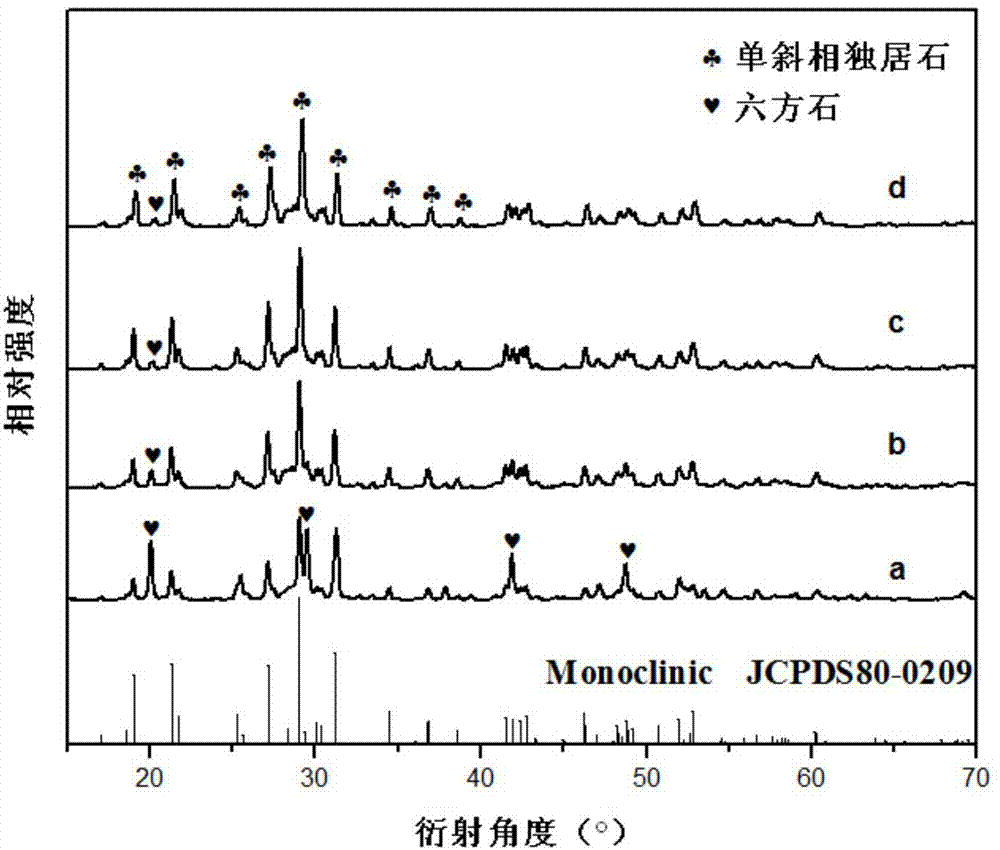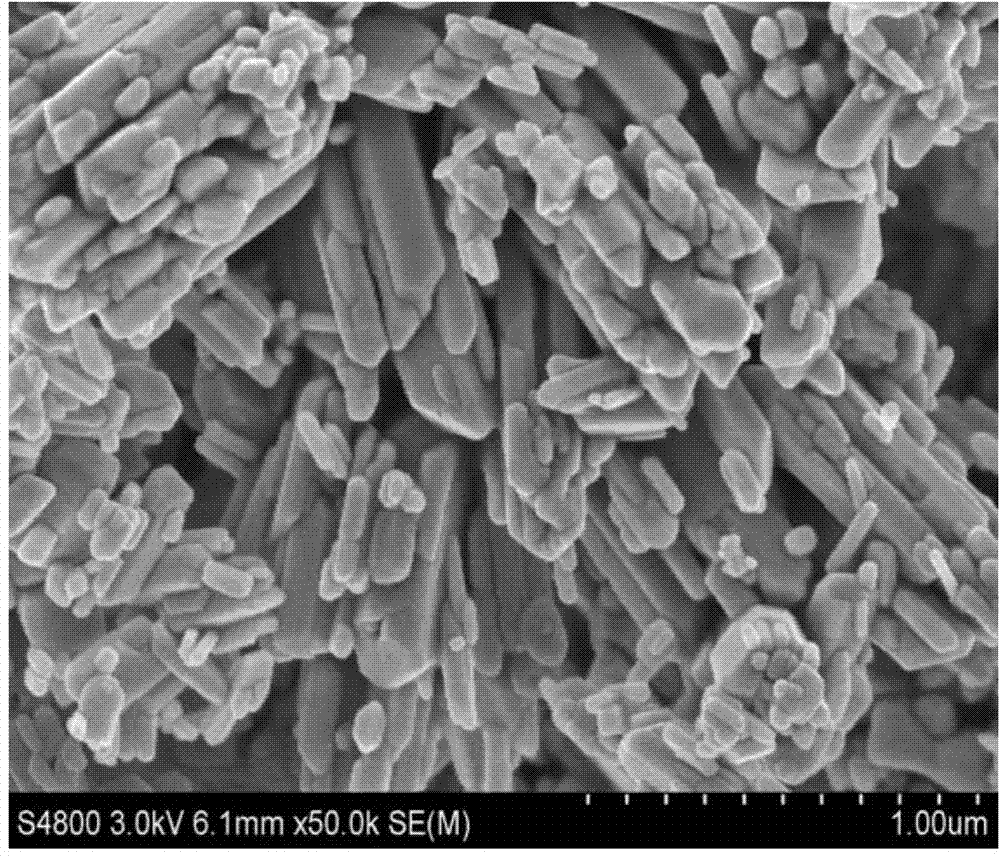Bismuth phosphate nano crystal cluster as well as preparation method and application thereof
A bismuth phosphate nanometer and crystal cluster technology, applied in the field of material science, can solve the problems of not commonly used chemical reagents, reduced pressure and high temperature environment, short reaction time, etc., and achieve the effect of simple and easy control, mild reaction conditions and fast reaction speed.
- Summary
- Abstract
- Description
- Claims
- Application Information
AI Technical Summary
Problems solved by technology
Method used
Image
Examples
Embodiment 1
[0029] Step 1: Add 0.003mol Bi(NO 3 ) 3 ·5H 2 O and 0.003mol Na 3 PO 4 12H 2 O was dissolved in 50ml deionized water and mixed evenly to obtain a precursor solution; in the precursor solution Bi(NO 3 ) 3 ·5H 2 O and Na 3 PO 4 12H 2 The concentration of O is 0.06mol / L;
[0030] Step 2: Put the precursor liquid into the microwave hydrothermal reaction kettle lined with polytetrafluoroethylene, control the filling ratio of the microwave hydrothermal reaction kettle to 50%, seal the microwave hydrothermal reaction kettle; put the microwave hydrothermal reaction kettle Put it into the microwave hydrothermal reaction instrument, select the microwave digestion (temperature control) scheme, set the microwave power to 300W, raise the temperature from room temperature to 100°C, and keep it at 100°C for 8 minutes; then raise the temperature from 100°C to 150°C, Keep warm for 8 minutes; then raise the temperature from 150°C to 160°C, and stop the reaction after holding at 160°C...
Embodiment 2
[0033] Step 1: Add 0.003mol Bi(NO 3 ) 3 ·5H 2 O and 0.003mol Na 3 PO 4 12H 2 O was dissolved in 50ml deionized water and mixed evenly to obtain a precursor solution; in the precursor solution Bi(NO 3 ) 3 ·5H 2 O and Na 3 PO 4 12H 2 The concentration of O is 0.06mol / L;
[0034]Step 2: Put the precursor liquid into the microwave hydrothermal reaction kettle lined with polytetrafluoroethylene, control the filling ratio of the microwave hydrothermal reaction kettle to 50%, seal the microwave hydrothermal reaction kettle; put the microwave hydrothermal reaction kettle Put it into the microwave hydrothermal reaction instrument, select the microwave digestion (temperature control) scheme, set the microwave power to 300W, raise the temperature from room temperature to 100°C, and keep it at 100°C for 8 minutes; then raise the temperature from 100°C to 150°C, Keep warm for 8 minutes; then raise the temperature from 150°C to 180°C, and stop the reaction after holding at 180°C ...
Embodiment 3
[0037] Step 1: Add 0.003mol Bi(NO 3 ) 3 ·5H 2 O and 0.003mol Na 3 PO 4 12H 2 O was dissolved in 50ml deionized water and mixed evenly to obtain a precursor solution; in the precursor solution Bi(NO 3 ) 3 ·5H 2 O and Na 3 PO 4 12H 2 The concentration of O is 0.06mol / L;
[0038] Step 2: Put the precursor liquid into the microwave hydrothermal reaction kettle lined with polytetrafluoroethylene, control the filling ratio of the microwave hydrothermal reaction kettle to 50%, seal the microwave hydrothermal reaction kettle; put the microwave hydrothermal reaction kettle Put it into the microwave hydrothermal reaction instrument, select the microwave digestion (temperature control) scheme, set the microwave power to 300W, raise the temperature from room temperature to 100°C, and keep it at 100°C for 8 minutes; then raise the temperature from 100°C to 150°C, Keep warm for 8 minutes; then raise the temperature from 150°C to 200°C, and stop the reaction after holding at 200°C...
PUM
 Login to View More
Login to View More Abstract
Description
Claims
Application Information
 Login to View More
Login to View More - R&D
- Intellectual Property
- Life Sciences
- Materials
- Tech Scout
- Unparalleled Data Quality
- Higher Quality Content
- 60% Fewer Hallucinations
Browse by: Latest US Patents, China's latest patents, Technical Efficacy Thesaurus, Application Domain, Technology Topic, Popular Technical Reports.
© 2025 PatSnap. All rights reserved.Legal|Privacy policy|Modern Slavery Act Transparency Statement|Sitemap|About US| Contact US: help@patsnap.com



